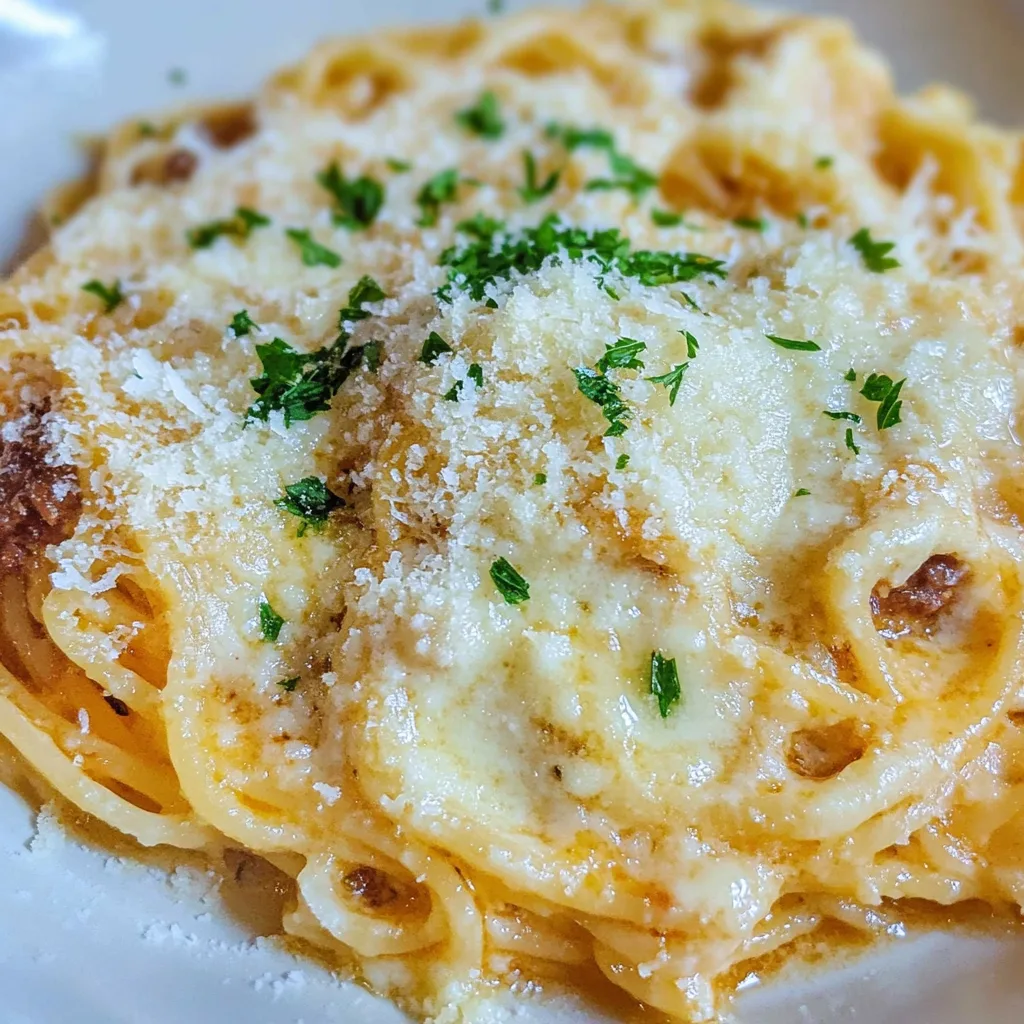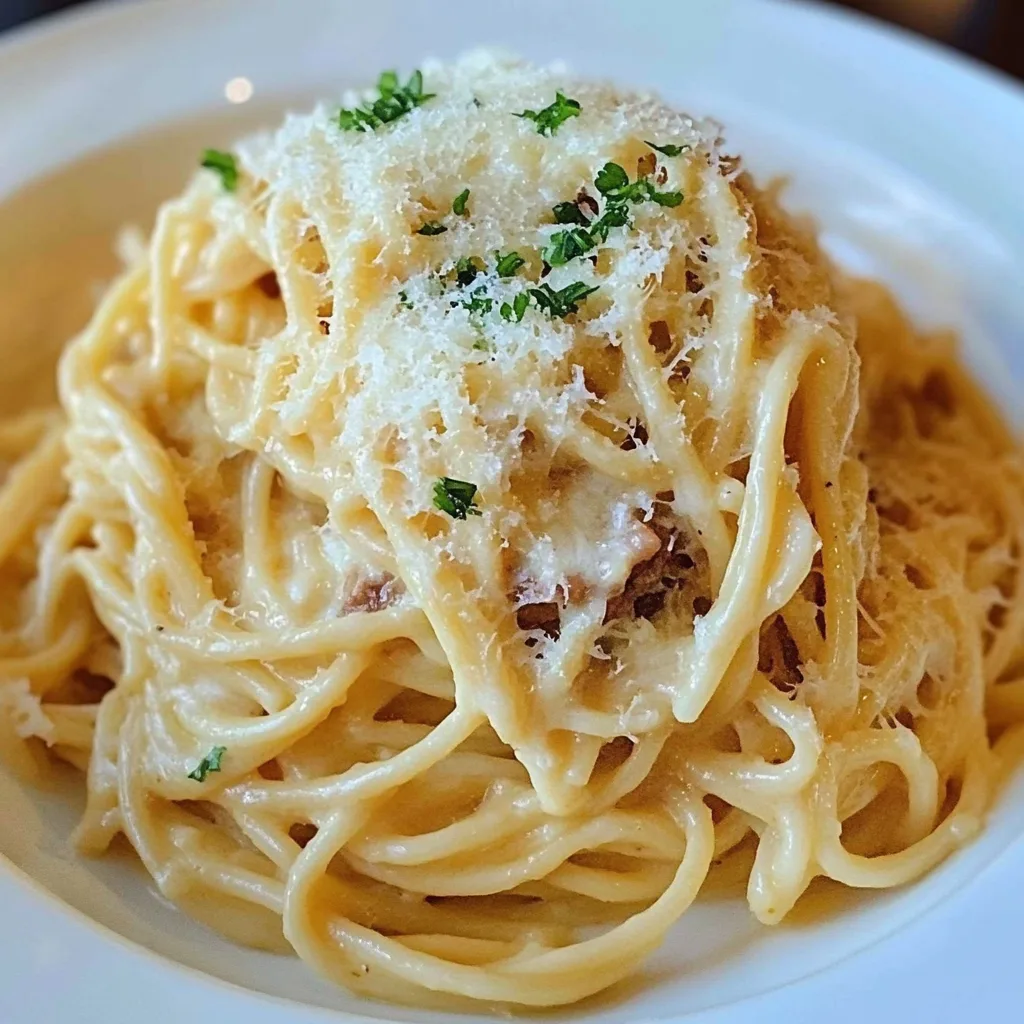The Definitive Guide to Alfredo Spaghetti: A Culinary Masterpiece
Alfredo spaghetti is more than just a dish—it’s a cultural icon that bridges the traditions of authentic Italian cuisine and the indulgence of modern comfort food. Its rich, creamy texture and simple ingredients make it a favorite for chefs and home cooks alike. But behind its worldwide appeal lies a story of invention, adaptation, and mastery of culinary technique. In this guide, we’ll take you through the origins, authentic recipes, modern variations, and creative pairings of this timeless classic.

Why Alfredo Spaghetti is a Global Phenomenon
At its heart, Alfredo spaghetti represents the beauty of simplicity. With just pasta, butter, and Parmesan cheese, it creates a dish so luscious that it has captivated food lovers across continents. From its birth in a Roman restaurant to its adaptation into a creamy, Americanized version, this dish showcases the power of emulsification—the technique of blending butter and pasta water into a smooth sauce. Its adaptability, whether paired with proteins, vegetables, or served as a side dish, ensures its place in the pantheon of culinary greatness.
The Journey of Alfredo Spaghetti: From Rome to Your Plate
What makes Alfredo spaghetti so enduring? Its story begins in 1908 Rome, where Alfredo Di Lelio created it to nourish his wife after childbirth. From this humble origin, the dish rose to fame when Hollywood stars introduced it to the United States, transforming it into a symbol of Italian-American dining. Yet, at its core, the original Roman recipe remains unchanged—a testament to the power of high-quality ingredients and masterful technique.
In this guide, we’ll not only explore the history but also teach you how to craft the perfect Alfredo spaghetti while offering creative twists and pairing suggestions to elevate your culinary skills. Whether you’re looking to honor its Roman roots or embrace modern innovations, this guide will equip you with all you need to know about Alfredo spaghetti.
The Origins of Alfredo Spaghetti: A Tale from Rome
The story of Alfredo spaghetti begins in early 20th-century Rome. Created by Alfredo Di Lelio in 1908, this dish, originally known as fettuccine al burro, featured only three ingredients: fresh pasta, butter, and Parmesan cheese. Its purpose was heartfelt—it was crafted to help Alfredo’s wife regain strength after childbirth.
The dish became a sensation when American actors Mary Pickford and Douglas Fairbanks visited Alfredo’s restaurant on Via della Scrofa during their honeymoon in the 1920s. They adored the dish and brought its fame to the U.S., leading to the creation of the Americanized Alfredo spaghetti, often enriched with cream.
Authentic Alfredo: The Simplicity of Perfection
Ingredients for Authentic Alfredo Spaghetti 🍝
Here’s what you’ll need to prepare a classic and creamy Alfredo spaghetti:
- 🍝 1 lb fresh fettuccine pasta
- 🧈 1 cup (2 sticks) unsalted butter (preferably high-quality European-style butter)
- 🧀 1 cup freshly grated Parmigiano-Reggiano cheese
- 💧 1 cup reserved pasta water (from cooking the pasta)
- 🧂 Salt to taste
- 🌶️ Freshly ground black pepper to taste
These simple yet high-quality ingredients form the foundation of this timeless dish.
Step-by-Step Instructions
- Cook the Pasta: Boil fettuccine in salted water until al dente. Reserve 1 cup of the cooking water.
- Melt the Butter: Gently melt butter in a wide pan, ensuring it doesn’t brown.
- Combine Ingredients: Add the cooked pasta to the butter. Sprinkle half the Parmesan and toss until it begins to melt.
- Emulsify the Sauce: Gradually add reserved pasta water while tossing until the sauce is smooth and creamy.
- Season and Serve: Add salt, pepper, and the remaining Parmesan. Serve immediately.
Modern Adaptations of Alfredo Spaghetti
The American Twist
In the U.S., Alfredo spaghetti evolved to include heavy cream, garlic, and sometimes even a sprinkle of nutmeg. These additions create a richer and more stable sauce but stray from the minimalist Italian approach.
For example, learning how to cook canned black beans can inspire creamy bean-based sauces, a potential variation on Alfredo for plant-based diets. Explore techniques for creating smooth sauces that parallel Alfredo’s emulsification process.
Creative Variations: Proteins and Vegetables
Proteins
Adding proteins transforms Alfredo spaghetti into a hearty meal. Options include:
- Grilled Chicken: Adds a savory note.
- Shrimp: Offers a sweet, seafood twist.
- Steak or Scallops: For an elevated, luxurious feel.
For guidance on complementary flavors, learn how to pair meats with sauces, as discussed in related culinary articles.
Vegetables
Vegetarian Alfredo is equally delightful. Incorporate roasted broccoli, sautéed spinach, or mushrooms for added texture and flavor. Discover how vegetables can enrich creamy dishes by exploring healthy vegetable-focused recipes.
Serving Suggestions and Pairings
Side Dishes
Classic pairings enhance the Alfredo experience:
- Garlic Bread: Perfect for soaking up the sauce.
- Fresh Salads: A light green salad or Caesar salad balances the richness of the dish.
Wine Pairings
Dry white wines like Pinot Grigio or Sauvignon Blanc complement Alfredo’s creamy texture. For more refined pairing ideas, discover pairing essentials.
FAQs: Mastering the Art of Alfredo Spaghetti
1. What is the difference between Alfredo and carbonara?
- Answer: Both are classic Italian pasta dishes, but they differ significantly in ingredients and preparation. Alfredo relies on butter, Parmesan cheese, and pasta water to create a creamy sauce, while carbonara uses eggs, pancetta (or guanciale), Pecorino Romano, and black pepper. The key distinction lies in the emulsification of butter and cheese in Alfredo versus the creamy texture from eggs in carbonara.
2. Can I make Alfredo spaghetti ahead of time?
- Answer: It’s best to prepare Alfredo spaghetti fresh for optimal flavor and texture. The emulsified sauce tends to separate when stored or reheated. If needed, you can pre-cook the pasta and prepare the butter and cheese mixture in advance. When ready to serve, reheat everything gently and toss with fresh pasta water to restore the creamy consistency.
3. How do I reheat Alfredo spaghetti without it separating?
- Answer: Reheating requires care. Place the pasta and sauce in a pan over low heat, adding a splash of milk, cream, or reserved pasta water to help re-emulsify the sauce. Stir continuously to prevent separation. Avoid microwaving, as the high heat can cause the butter to separate from the cheese.
4. What pasta shapes work best for Alfredo?
- Answer: While fettuccine is traditional, other long, flat pasta shapes like tagliatelle or pappardelle also work well. These shapes have a wide surface area that holds the creamy sauce beautifully. For a modern twist, try using linguine or even shorter pasta shapes like rigatoni, which catch the sauce in their ridges.
5. Can I make Alfredo sauce gluten-free?
- Answer: Absolutely! The sauce itself is naturally gluten-free as it contains butter, Parmesan cheese, and pasta water. Simply pair it with gluten-free pasta for a safe and delicious meal for those with gluten sensitivities.
6. How can I thicken my Alfredo sauce if it’s too thin?
- Answer: If your sauce is too runny, try the following:
- Add more grated Parmesan cheese to thicken the sauce.
- Toss the pasta more vigorously to encourage emulsification.
- If needed, create a cornstarch slurry (1 teaspoon cornstarch mixed with 2 teaspoons cold water) and whisk it into the sauce over low heat.
7. How do I store leftover Alfredo spaghetti?
- Answer: Store leftovers in an airtight container in the refrigerator for up to 3 days. To reheat, follow the low-heat method mentioned above to prevent separation. Adding a little cream or milk can help restore its creamy texture.
8. What proteins or vegetables can I add to Alfredo spaghetti?
- Answer: Alfredo pairs beautifully with:
- Proteins: Grilled chicken, shrimp, scallops, or smoked salmon.
- Vegetables: Broccoli, mushrooms, asparagus, spinach, or artichokes. Roasting or sautéing the vegetables before adding them enhances their flavor.
9. What are some creative ways to elevate my Alfredo spaghetti?
- Answer:
- Add a pinch of nutmeg for a warm, aromatic touch.
- Incorporate a squeeze of fresh lemon juice to brighten the sauce.
- Sprinkle freshly chopped herbs like parsley or basil for a fresh flavor boost.
- Experiment with flavored butters (like garlic butter) for added complexity.
10. How can I ensure my Alfredo spaghetti is restaurant-quality?
- Answer: Focus on these tips:
- Use high-quality butter and Parmigiano-Reggiano cheese.
- Cook the pasta to al dente so it retains texture and absorbs the sauce well.
- Reserve enough pasta water to create a silky, smooth sauce.
- Toss the pasta vigorously to achieve a perfect emulsion between the butter and cheese.
These detailed answers ensure that every home cook can confidently prepare and enjoy the perfect plate of Alfredo spaghetti!

Conclusion: Celebrating the Timeless Appeal of Alfredo Spaghetti
Alfredo spaghetti is more than just a dish; it’s a culinary masterpiece that embodies simplicity, indulgence, and the art of Italian cooking. From its humble beginnings in a Roman restaurant to its widespread popularity in kitchens around the globe, this dish has proven to be a timeless classic that resonates with food lovers of all ages and backgrounds.
What makes Alfredo spaghetti so special is its adaptability. The authentic Roman recipe, with just butter, Parmesan cheese, and pasta water, showcases the brilliance of minimalism and high-quality ingredients. It’s a reminder that great food doesn’t need to be complicated. Yet, the dish’s Americanized versions, featuring cream, garlic, and various proteins or vegetables, highlight its versatility and ability to evolve while retaining its comforting essence.
Preparing Alfredo spaghetti is not just about following a recipe; it’s about understanding the techniques that make it extraordinary. Mastering the process of emulsification, choosing the right ingredients, and experimenting with creative additions allows you to personalize the dish and make it your own.
Whether you’re savoring a plate of authentic fettuccine al burro or indulging in a rich, creamy chicken Alfredo, this dish has the power to bring people together. Its creamy, comforting flavors evoke warmth, celebration, and a sense of home. Paired with the perfect sides and wine, it can transform a simple dinner into a memorable experience.

